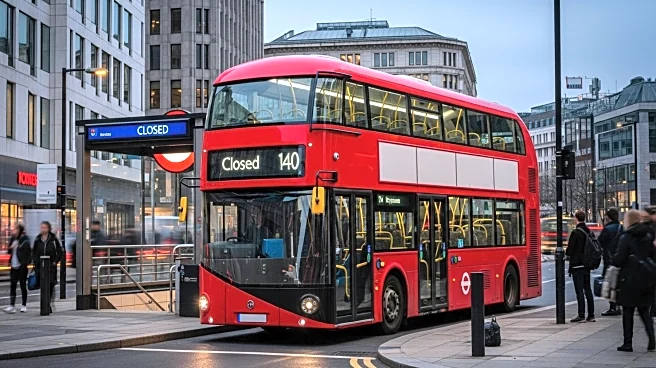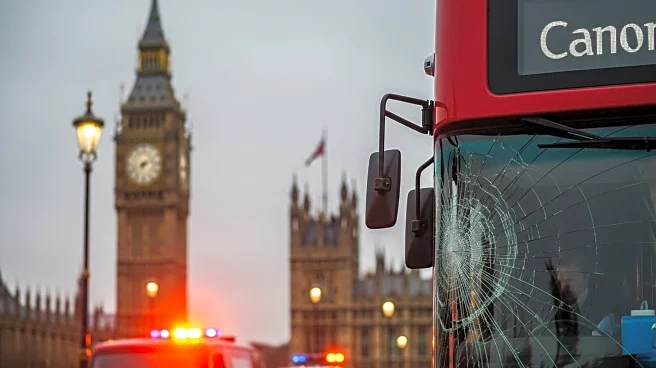What's Happening?
Transport for London (TfL) is experiencing significant disruptions as London Underground staff commence a five-day strike over pay and working conditions. The strike, led by the Rail, Maritime and Transport (RMT) union, is a response to demands for a 32-hour workweek and better fatigue management. TfL has offered a 3.4% pay increase but has stated that reducing the contractual 35-hour workweek is not feasible. The strike has resulted in limited services on Sunday and is expected to cause little or no service from Monday to Thursday. The Elizabeth line and Overground services are operational but are experiencing higher than usual passenger volumes. Additionally, a separate dispute on the Docklands Light Railway (DLR) will halt services on Tuesday and Thursday.
Why It's Important?
The strike highlights ongoing tensions between TfL and its workforce, reflecting broader labor disputes over working conditions and pay in the public transport sector. The disruption affects not only daily commuters but also events in the city, such as the rescheduling of US rapper Post Malone's concerts due to inadequate public transport. The strike underscores the challenges faced by urban transport systems in balancing operational costs with employee demands, potentially influencing future negotiations and labor policies. The increased pressure on alternative transport lines like the Elizabeth line and Overground could lead to overcrowding and further logistical challenges.
What's Next?
TfL and the RMT union may engage in further negotiations to resolve the dispute, but the immediate focus will be on managing the impact of the strike. Commuters are advised to seek alternative routes and stay updated on service changes. The outcome of this strike could set a precedent for future labor actions within the transport sector, potentially influencing other unions and public service negotiations.
Beyond the Headlines
The strike raises questions about the sustainability of current public transport models in major cities, particularly in terms of employee welfare and service delivery. It also highlights the potential for increased reliance on alternative transport modes, which could drive innovation in urban mobility solutions.











